From a journalistic perspective, having been around the Dublin Fringe Festival for 14 of its 18 years means having been in many an office space, either to collect reviewing tickets or to interview main players. These offices have run the gamut from gloomy to grotty, and all have had a temporary, don’t-toss-the-packing-boxes-in-the-bin vibe, an atmosphere of fervour and artistry held together by blue tack and sheer force of will.
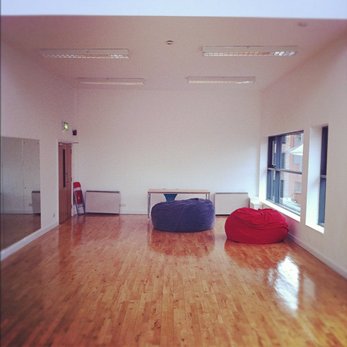 The new premises overlooking Meeting House Square come as shock: familiar faces are lit by the abundance of light streaming through an embarrassment of windows, and you can still smell the freshness of paint. A snoop around the Fringe Lab, one floor up, reveals two pristinely kept rooms; a chalkboard displaying chock-a-block rehearsal schedules, black and white proof that the space is well-used; and even more light.
The new premises overlooking Meeting House Square come as shock: familiar faces are lit by the abundance of light streaming through an embarrassment of windows, and you can still smell the freshness of paint. A snoop around the Fringe Lab, one floor up, reveals two pristinely kept rooms; a chalkboard displaying chock-a-block rehearsal schedules, black and white proof that the space is well-used; and even more light.
There are many misconceptions that go along with a fringe, one of which is that its officers must make do with rubbishy surroundings in order to be creative, and then passing on that parsimonious virtuousness to its artists. If there is one overriding impression that Róise Goan gives, now in her fourth year of artistic direction of the event, it is that if there is anything she can do to make things better for the artists under her care, she will do it; part of that is providing them with a welcoming and vibrant place to call home. “In our experience, when presenting new work, by new, or independent artists in a festival context,” she says, “a high level of engagement and support with those artists is required.”
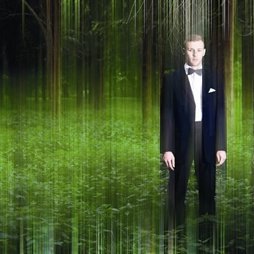 The fact is, the festival is not just those two weeks in September, it is a year round proposition. Development of new work is key to Goan’s vision, and there are several shows in the 2012 programme that will go on, as evidence of that. Among these include Fergal McCarthy and Word River, an art installation on the Liffey; partnering with Cork Opera House, to bring Efterklang and the Major Lift Orchestra to Dublin and Cork; through the Spirit of the Fringe Commissioning Award, in which practioners win €5000 towards producing a show in the next year’s festival in Project Arts Centre; and support to THISISPOPBABY’s new piece, Elevator.
The fact is, the festival is not just those two weeks in September, it is a year round proposition. Development of new work is key to Goan’s vision, and there are several shows in the 2012 programme that will go on, as evidence of that. Among these include Fergal McCarthy and Word River, an art installation on the Liffey; partnering with Cork Opera House, to bring Efterklang and the Major Lift Orchestra to Dublin and Cork; through the Spirit of the Fringe Commissioning Award, in which practioners win €5000 towards producing a show in the next year’s festival in Project Arts Centre; and support to THISISPOPBABY’s new piece, Elevator.
“We’re also co-producing a work with Dublin Youth Theatre,” says Goan, “Which is a really nice symmetry for us, having an organisation that is all about youth, which has been an engine of the Dublin theatre scene for so long, and to bring them together with Coney, these radical, really fantastic international practitioners.” RSVP, will have been created by two of Coney’s members, Dan Canham and Tassos Stevens, along with young actors from DYT, a show whose programme note exhorts the prospective patron to wear good shoes. Gulp.
A primary feature of this year’s programme, in fact, is that much of the work is not to be partaken of from a safe seat, out in the dark. “That idea of being an active participant is one that runs through all of the work that we’re presenting this year. It’s about participation, and it challenges that endemic apathy that is beginning to really frustrate people here. A lot of the work we’re presenting this year is on response to that.”
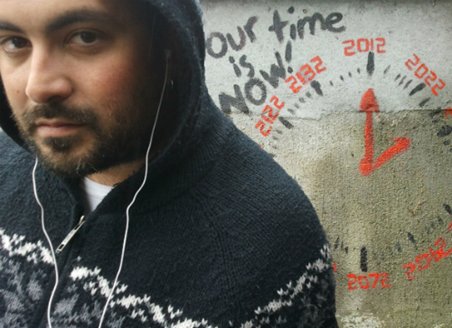 One show that will keep you on your toes, much less your feet, is Máiréad Ní Chróinín’s Just in Time, and speaks to Goan’s desire to invest in “an artist making new work, that is in tune with European work. Máiréad has been working in theatre for the past ten years, but has also had this other career in political development. She became interested in this place where performance and game could meet. This is really a really exciting piece, because she’s playing with a really nostalgic, utterly familiar narrative, a futuristic, dystopian world and bringing it right into the present by placing the audience member into the centre of the game, where they are responsible for the outcome of what happens.” Audience member/participants have one hour to track an arch-criminal around Dublin city, using their iPhone or Android — and yes, there is an app for this. “They’re guided through the city where they encounter different bits of stories and clues that will bring them to their endgame — and it’s against the clock as well.”
One show that will keep you on your toes, much less your feet, is Máiréad Ní Chróinín’s Just in Time, and speaks to Goan’s desire to invest in “an artist making new work, that is in tune with European work. Máiréad has been working in theatre for the past ten years, but has also had this other career in political development. She became interested in this place where performance and game could meet. This is really a really exciting piece, because she’s playing with a really nostalgic, utterly familiar narrative, a futuristic, dystopian world and bringing it right into the present by placing the audience member into the centre of the game, where they are responsible for the outcome of what happens.” Audience member/participants have one hour to track an arch-criminal around Dublin city, using their iPhone or Android — and yes, there is an app for this. “They’re guided through the city where they encounter different bits of stories and clues that will bring them to their endgame — and it’s against the clock as well.”
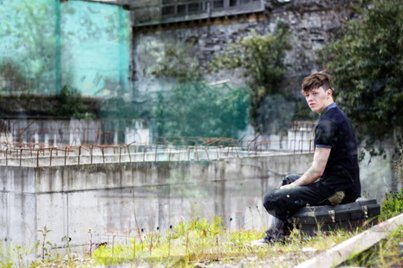 Contrasted with this is a new piece from Shaun Dunne, Death of The Tradesmen, a proper set-in-a-theatre play, but one that speaks to the youthful experience as much as running around town playing an immersive theatre game does. It tells the story of Dunne’s father, who was a carpenter. “When the recession hit, he lost his job,” Goan explains. “It’s dealing with the theme of long term unemployment, which, of course, was a really important theme in Irish arts in the 50s, in the 80s — but now, this is coming from the perspective of somebody who is a Celtic Tiger Cub, who never thought that this could happen.” This point of view, if unfortunately gained, is refreshing. “After the boom had happened, people thought that this could never happen again, and this story if from a younger perspective — it had been engraved in their DNA that poverty was a thing of the past.”
Contrasted with this is a new piece from Shaun Dunne, Death of The Tradesmen, a proper set-in-a-theatre play, but one that speaks to the youthful experience as much as running around town playing an immersive theatre game does. It tells the story of Dunne’s father, who was a carpenter. “When the recession hit, he lost his job,” Goan explains. “It’s dealing with the theme of long term unemployment, which, of course, was a really important theme in Irish arts in the 50s, in the 80s — but now, this is coming from the perspective of somebody who is a Celtic Tiger Cub, who never thought that this could happen.” This point of view, if unfortunately gained, is refreshing. “After the boom had happened, people thought that this could never happen again, and this story if from a younger perspective — it had been engraved in their DNA that poverty was a thing of the past.”
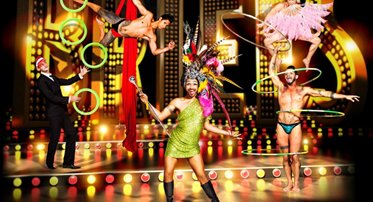 And yet, it’s not all about turning doom and gloom into art. “You try and think of the socio-economic, political situation… but the choice, for example, to present Briefs this year, which is a huge, big, messy, brilliant, gay, cabaret is that I think that people actually need a laugh! They need a good night out! At the heart of every festival — no matter that we are a radical, contemporary arts festival — there should be a good night out in the programme. No matter who we are, you need that. This is slightly…. bold,” she snickers, naughtily (note to self: book a ticket to this) “But it’s still accessible.”
And yet, it’s not all about turning doom and gloom into art. “You try and think of the socio-economic, political situation… but the choice, for example, to present Briefs this year, which is a huge, big, messy, brilliant, gay, cabaret is that I think that people actually need a laugh! They need a good night out! At the heart of every festival — no matter that we are a radical, contemporary arts festival — there should be a good night out in the programme. No matter who we are, you need that. This is slightly…. bold,” she snickers, naughtily (note to self: book a ticket to this) “But it’s still accessible.”
***
“I started this job four years after I graduated from college,” says Goan. “During those four years I worked as a producer, a director, a writer, marketing and development officer at The Ark, I started a project called Project Brand New, I did twenty million things, so I… I didn’t really know what I was trying to do? When the opportunity (at the Fringe) arose, I didn’t think it was something I would go for, it didn’t occur to me to apply for the job. Now, looking back, it seems inevitable: that being an artistic director is the ideal mix of being a producer and being a director.” And the best part of the best? ‘Being able to work with artist, and help them bring their vision to fruition — that’s the thing I really enjoy. Talking to artists about art, and then putting it on and seeing an audience’s reaction to it… it’s my dream job.”
‘Artist’, conversation’, and ‘development’ would figure largely should a word cloud of the transcription of this interview be constructed. It’s not all about warm, clean, brand new offices at all, really, just that they make a nice change, and give the festival some hard earned dues. Some prestige, even. But can an edgy, youth-orientated festival be allowed something as stuffy as prestige?
“We’re still mad! We’re still young! We still do crazy things!” Goan insists. “The theme of this year’s festival is about trying to inspire a little bit of anarchy and messiness again. It really is a celebration of risk, creativity, and protest. We asked artists to push themselves very hard last year, and to me it felt like is had been a long, dark night of the soul — with some really amazing work, but very, very dark.” This year, “ the thematic was playful protest, creative disruption, and joyful abandon.”
Fair enough. Can that be read right off the page, though? Off the page of the typically exhaustive, and exhausting brochure? Even as one who has years of experience with this fringe-y craic, the first thumb through always feels like an expedition up Everest with a box of matches and an umbrella — you do some serious McGiver-ing with both, but neither seem up to the larger task. Some critical capacity kicks in; oh, there’s that lot from a couple of years ago, they were good, and ebbs and flows between a mature assessment based on knowledge, and a visceral reaction to pictures.
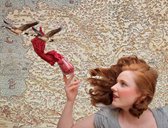
There’s one where it looks like you get to drink wine? (A Wine Goose Chase.)
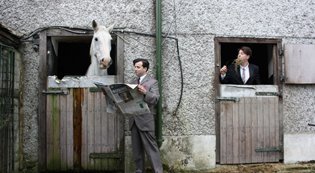
There’s also one in which the publicity still features a horse — I would really like to go to a theatre show that has a live horse in it. (Farm, presented by WillFredd Theatre, 2011’s recipient of the Spirit of the Fringe Award.)
After a while, everything starts to look pretty amazing. “At this moment, I’m convinced that every show we’re presenting is going to be excellent, and it wouldn’t be in the programme if I didn’t think that,” says Goan. “Of course, it doesn’t work out like that, it never does, but I think that faith and good will is really important. In terms of making decisions about what you should go and see, I would recommend that of course you go and see the artists you know and love, but also take a risk on something new, because you’ll never know who you’ll find.”
It’s in that spirit of risk that even the most jaded annual fringe-goer finds the inspiration to give it go, all over again. You simply never know what you’re going to get to see — and you wouldn’t want to miss out on the next big thing, would you? Many of the practitioners who got their starts those many years ago are now a part of The Establishment, and many of us can remember them when. “Some of them are still radical, countercultural artists who dance to the beat of their own drum. I think it’s always worth taking a chance on the festival,” Goan asserts. “What we do is present the new thing and the next thing. The constant is change.”
Susan Conley is a cultural critic and author.